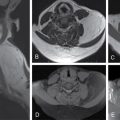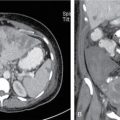
Scientific research keeps moving forward, and so do the tools we use. Among the many proteins that researchers are working with today, CTSB recombinant protein has become especially important. It’s being used to explore how diseases develop and progress, and it’s helping labs find smarter ways to test treatments before they go to clinical trials.
Performs Like the Natural Enzyme—But With Less Hassle
Cathepsin B (CTSB) is a cysteine protease found inside lysosomes. It normally helps break down proteins in cells. The recombinant version behaves like the real thing but is far easier to work with.
Researchers benefit from this because:
- They don’t need to extract it from tissues.
- The activity is predictable and consistent.
- It removes much of the trial-and-error from early-stage experiments.
The purified protein also cuts down lab time since it arrives ready for use, skipping lengthy prep steps.
Plays a Central Role in Disease Biology
This protein isn’t sitting on the sidelines. It’s actively involved in processes that researchers are constantly trying to understand. These include:
- Cancer cell migration and invasion
- Neuronal cell loss in the brain
- Immune system signaling
- Inflammatory responses
- Viral or bacterial entry into host cells
Since CTSB recombinant protein is active in these areas, scientists can study these pathways under controlled lab conditions.
Key Tool in Cancer-Focused Studies
CTSB levels tend to rise in many types of tumors. That’s one reason labs use the recombinant version to study how cancer spreads and what might stop it.
Researchers can:
- Watch how tumor cells degrade the surrounding environment
- Test how well certain molecules block CTSB activity
- Screen drug candidates before moving to animal trials
These applications make the protein valuable during early drug development when speed and reliability really matter.
Supports Research in Brain-Related Conditions
Neurodegenerative diseases like Alzheimer’s and Parkinson’s have been linked to protein misfolding and cell death. CTSB is part of the machinery involved in both.
Neuroscience teams use CTSB recombinant protein to:
- Study how amyloid-beta gets broken down
- Examine how lysosomes behave under stress
- Understand the role of CTSB in protecting or damaging nerve cells
These insights are critical when looking for new treatment strategies in brain health.
Trusted for Enzyme Activity Testing
One of the best things about recombinant proteins is consistency—and CTSB is no exception. Since it comes with known enzymatic activity, it’s reliable for use in various assays.
Scientists use it to:
- Analyze how fast CTSB breaks down certain substrates
- Compare normal and altered protein versions
- Study how drugs or small molecules affect enzyme behavior
Helps Uncover Immune and Inflammatory Responses
CTSB doesn’t just deal with protein cleanup—it’s involved in immune cell behavior, too. That’s why it’s used in research on chronic inflammation and autoimmune conditions.
Labs working in this space apply CTSB recombinant protein to:
- Track cytokine responses
- Know how long-term inflammation is handled by the body
This work can support the development of therapies that better manage the immune system without over-suppressing it.
Available in Clean, Flexible Formats
This protein is available in ready-to-use formats and at high purity—typically over 90%. That means less risk of unwanted variables in sensitive studies.
You can usually choose from:
- Powder or liquid forms
- Tagged or untagged versions
Saves Time in Early Drug Testing
Drug development is a long and expensive process. Using CTSB recombinant protein in early research helps labs test compound effectiveness quickly. If a molecule fails to inhibit the protein in a test tube, there’s no need to move forward with expensive animal models.
This speeds up lead compound selection and inhibitor profiling.
What It All Means
CTSB recombinant protein is a powerful tool for anyone studying diseases, developing treatments, or building new experiments. It helps labs build better models and find smarter drug candidates. It also helps dive deeper into how diseases work at a molecular level. From cancer to neurodegeneration to immune responses, researchers rely on this tool for results they can trust. CTSB has also earned its spot as a go-to resource in modern biochemical research.
Stay updated, free articles. Join our Telegram channel

Full access? Get Clinical Tree





